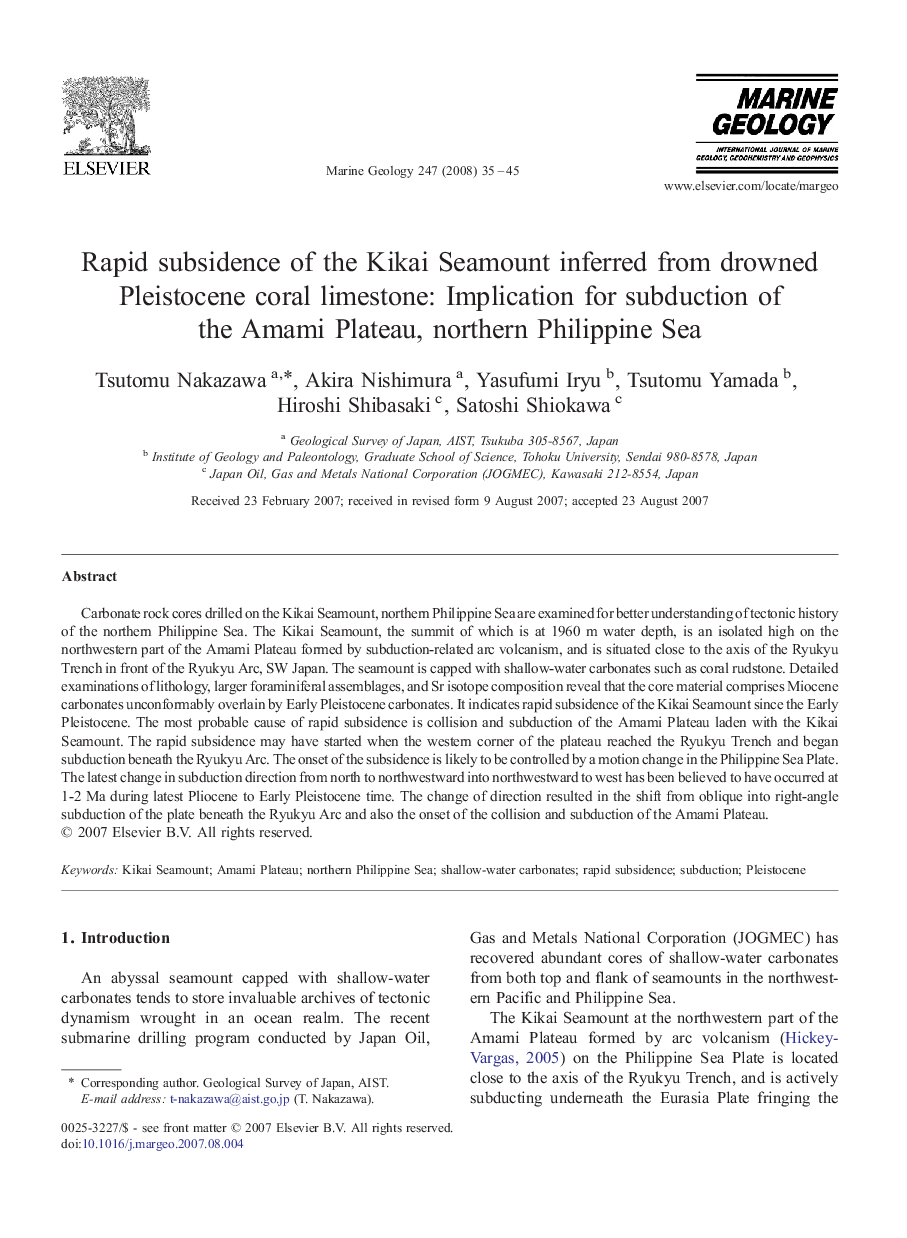| Article ID | Journal | Published Year | Pages | File Type |
|---|---|---|---|---|
| 4719432 | Marine Geology | 2008 | 11 Pages |
Carbonate rock cores drilled on the Kikai Seamount, northern Philippine Sea are examined for better understanding of tectonic history of the northern Philippine Sea. The Kikai Seamount, the summit of which is at 1960 m water depth, is an isolated high on the northwestern part of the Amami Plateau formed by subduction-related arc volcanism, and is situated close to the axis of the Ryukyu Trench in front of the Ryukyu Arc, SW Japan. The seamount is capped with shallow-water carbonates such as coral rudstone. Detailed examinations of lithology, larger foraminiferal assemblages, and Sr isotope composition reveal that the core material comprises Miocene carbonates unconformably overlain by Early Pleistocene carbonates. It indicates rapid subsidence of the Kikai Seamount since the Early Pleistocene. The most probable cause of rapid subsidence is collision and subduction of the Amami Plateau laden with the Kikai Seamount. The rapid subsidence may have started when the western corner of the plateau reached the Ryukyu Trench and began subduction beneath the Ryukyu Arc. The onset of the subsidence is likely to be controlled by a motion change in the Philippine Sea Plate. The latest change in subduction direction from north to northwestward into northwestward to west has been believed to have occurred at 1-2 Ma during latest Pliocene to Early Pleistocene time. The change of direction resulted in the shift from oblique into right-angle subduction of the plate beneath the Ryukyu Arc and also the onset of the collision and subduction of the Amami Plateau.
